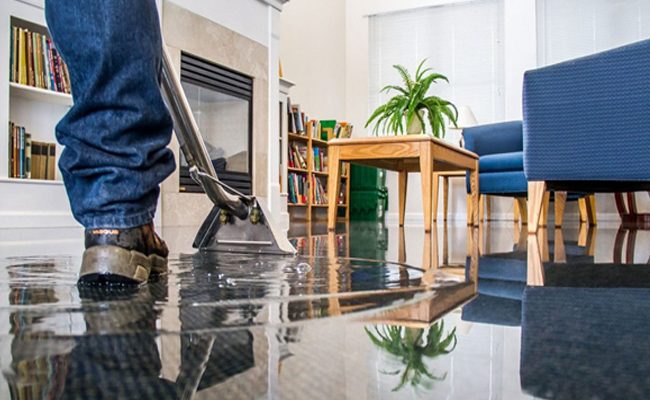
Flooding occurs more frequently than you might think. In fact, according to the National Weather Service, almost 75% of all presidential disaster declarations are due to flooding. In the US, the most flooded states are Mississippi, Florida, and Louisiana.
Still, many people buy properties in those places. According to local news in Florida, more than 300,000 people moved to the state in 2020, which is expected to continue until 2025. If you’re thinking about buying a property in a flood-prone area, there are some things you should remember to help protect your investment from water damage.
Here’s how:
1. Elevate Your Home
You can elevate an existing house by raising the foundation, which is usually accomplished by adding piers or supports underneath the existing foundation. This helps to keep the property from being swept away by floodwaters. It also helps prevent water from seeping into the home’s lowest level.
If you plan to build a house on a lot you bought, it’s a requirement to elevate the structure to avoid future damage from flooding. The Federal Emergency Management Agency (FEMA) has detailed elevation guidelines that contractors should follow.
2. Install a Sump Pump and Backup Generator or Battery
A sump pump is a device that helps remove water from your home. It’s installed in the lowest part of your house, usually in the basement. It can pump water out and away from the property.
Additionally, always have a backup generator or battery on hand in case of a power outage. This ensures that your sump pump will continue to operate during a power outage, which can help keep water from entering your home.
3. Buy Flood Insurance
One way to protect your home from potential water damage is to buy flood insurance. Flood insurance is not included in standard homeowner’s insurance policies, so you need to purchase it separately.
Flood insurance helps pay for damage to your home and possessions caused by flooding. It’s important to note that flood insurance does not usually cover damage from water that seeps into your home through windows, doors, or cracks in the foundation.
4. Install a Wet-Barrier
If you live in a high-risk area for flooding, you may want to consider installing a wet barrier. It is a waterproof barrier that lines the perimeter of your property and helps keep water out.
It’s typically made of plastic or vinyl and is installed around the foundation of your house. There are also some types of wet barriers that can be installed outside your home, such as flood doors and windows.
5. Use Water-Resistant Materials
When renovating or constructing a new home in a flood-prone area, it’s vital to use materials resistant to water damage. This includes waterproof paint, sealants, and flooring. You should also avoid using drywall in the lower levels of your home as it can be easily damaged by water.
6. Install Flood Vents
If your house is located in a Special Flood Hazard Area (SFHA), you must have flood vents installed. These are vents that allow water to escape from the home in the event of a flood.
Also, they help prevent water from entering the home and causing extensive damage. Flood vents are typically installed in the attic or roof of the house.
7. Elevate Your Electrical Components
Elevating your electrical components, such as your fuse box, breaker box, and wiring, is always safe. This helps protect them from being damaged by water in the event of a flood.
8. Create Drainage Pathways
If water can’t drain away from your property, it will sit on top of your foundation and cause water damage. You can help prevent this by creating drainage pathways leading away from your home. This might involve installing drainage pipes or grading your property so that water flows away from your house.
9. Keep Your Gutters Clean
If you don’t keep your gutters clean, they can become blocked and allow water to accumulate around your home. This can lead to water damage to the exterior of your house and even lead to flooding.
10. Regularly Inspect Your Property for Damage
Keep in mind to inspect your property regularly for any damage that a flood may have caused. This includes checking for signs of water infiltration, mold growth, and structural damage.
If you find any damage, take action right away to prevent further damage.
11. Keep Emergency Contact Numbers at Hand
It’s always best to have a list of emergency contact numbers handy in case of a disaster. This includes your insurance company, local contractors, police department, local fire station, a qualified electrician, and a reputable restoration company, such as PuroClean.
Having this information readily available makes you take action quickly if there is water damage to your home.
Is It Worth Buying a Home in a Flood-Prone Area?
Flooding can cause extensive damage to homes and properties, but you can at least try to protect yourself from experiencing any losses with these tips above. In general, houses in these areas are cheaper than those not in high-risk areas, so it really depends on your priorities.
In the first place, flooding doesn’t occur in every area prone to it. Secondly, proper preparedness can go a long way in mitigating damages if a flood were to happen.
So, if you’re comfortable with taking the risk and have done your research on what to do if flooding occurs, buying a home in a flood-prone area may be worth it. Remember to be vigilant about inspecting your property for any potential damage and take action quickly if anything seems off.
Leave a Reply